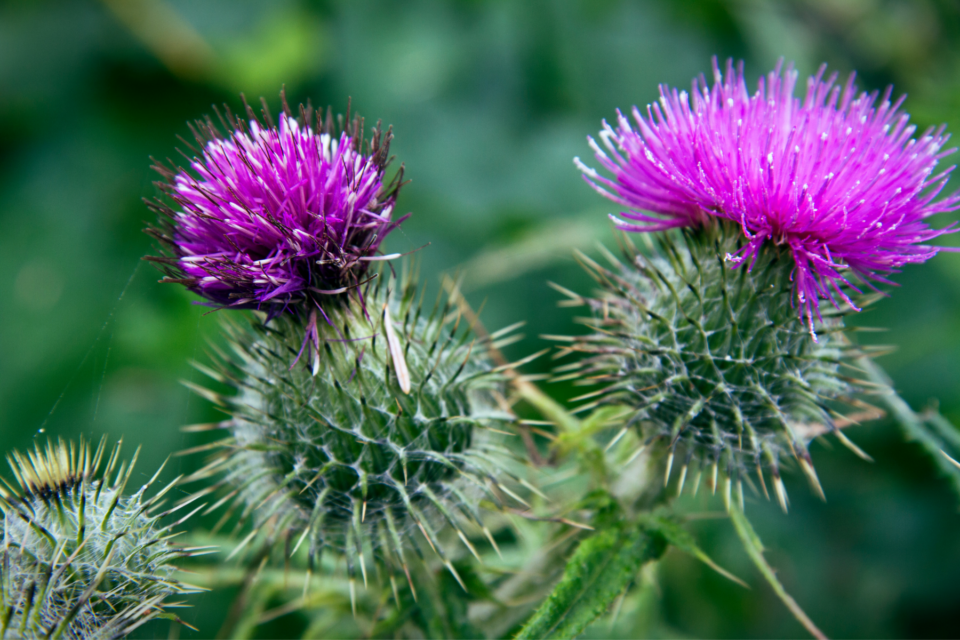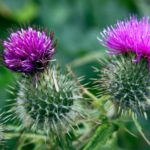Wyoming Natural Diversity Database Releases New Thistle Field Guide

The Wyoming Natural Diversity Database (WYNDD) at the University of Wyoming has released a new field guide on Wyoming thistles, designed to assist those who work or recreate outdoors in identifying native and nonnative thistles.
Titled “Wyoming Thistle Field Guide” and published in partnership with UW Extension, the pocket-sized guide features photos and descriptions of all 24 thistles found in the state, including the five noxious invasives.
Author Bonnie Heidel, lead botanist for WYNND, says the purpose of the new publication is to “bring attention to the bane and benefits of thistles.” The guide is intended for statewide use by weed crews, landowners, educators, land managers and botanists. The keys, designed to guide users through the identification process step by step, are written for nonexperts.
“Some of the most pervasive noxious weeds in the state are invasive thistles,” Heidel says.
If not identified and treated accordingly, invasive thistles can displace native species, degrade habitat quality, impact agriculture and reduce land value. Native thistles, on the other hand, “provide benefits for wildlife, pollinators and for rangeland health in general,” Heidel says. Bird species and large herbivores, such as elk, also rely on native thistles as a food source. The big takeaway? Know the difference, Heidel says.
Print copies of the publication can be purchased online for $4.50 plus shipping from UW’s Biodiversity Institute online or from the Wyoming Weed and Pest Council website. Designed for convenience in the field, the guide features a ruler on the inside cover and sturdy spiral binding.
A free digital copy of the guide is available online.
For additional assistance with plant identification, visit this website to contact a local UW Extension educator.
About Wyoming Natural Diversity Database (WYNDD)
The Wyoming Natural Diversity Database (WYNDD) is a member of a network of similar programs collectively known as the Natural Heritage Network. Each of the 50 US states, most Canadian provinces, and many Latin American countries house a network program dedicated to gathering and developing biological information on species of conservation concern and natural vegetation communities. Programs in the network use the same database methodology and software and receive technical support from a coordinating organization known as NatureServe. Most programs are housed in universities or state agencies; WYNDD operates as a service and research unit of the University of Wyoming.
About University of Wyoming Extension
Since 1914, UW Extension has helped Wyoming citizens and communities respond to challenges and changes. They have offices in each of the state’s 23 counties and the Wind River Indian Reservation. Although their roots are in agriculture, UW Extension has broadened its educational mission to encompass many of the contemporary challenges facing Wyoming’s people and its rural communities. UW Extension is committed to providing lifelong learning opportunities in 4-H, agriculture, horticulture, nutrition, natural resources, community development education and more.
About the Wyoming Weed and Pest Council
Wyoming Weed and Pest Council (WWPC) is comprised of 23 Weed and Pest Districts in the state of Wyoming. The Council works closely with the Wyoming Department of Agriculture and the University of Wyoming to keep current with the latest technology and research available to manage noxious weeds and pests. The overall mission is to provide unified support and leadership for integrated management of noxious weeds and pests to protect economic and ecological resources in the state.



